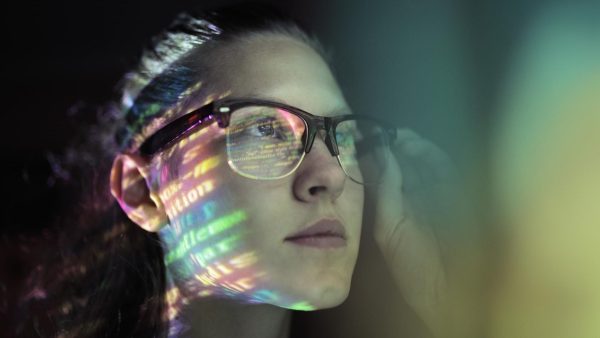From traditional ‘telepresence’ room meetings, which require a lot of upfront resources, holograms are now being used much more easily and quickly to collaborate with our interlocutors, merging the real world with the virtual one.
With 5G technology and the Edge, high-resolution 3D objects can be transmitted in real time, enabling seamless and uninterrupted collaboration in the user experience.
How does it work?
Each user is able to generate their own hologram using only their mobile selfie camera, democratising access to this innovative technology. With generative AI, even eye contact and facial expressions can be experienced, making the experience even more realistic and immersive.
One of the most interesting things is being able to share and demonstrate 3D models in a real or virtual environment while sharing a meeting with the other participants as realistic holograms. This allows you to feel each other’s presence as if you were in the same room, making meetings more productive and effective than ever.
Leaving behind delays, misunderstandings and 2D limitations are some of the advantages. They have endless applications in collaborative education, the fashion industry, major sporting events, collaborative design, etc.
Holographic calls, 5G and Edge Computing
The combination of technologies such as 5G, Edge Computing and fibre are key to improve the immersive experience and make possible the holographic telepresence system with 3D capture, to be ‘teleported’ in real time to augmented reality and virtual reality environments.
5G
Thanks to the capabilities of 5G connectivity, a platform can be developed to render two-dimensional (2D) multimedia content and transform it into three-dimensional holograms in a virtual, augmented or mixed reality (VR, AR or XR) environment. This challenge overcomes the previous limitations to create and transmit realistic 3D images and videos, simply using the selfie camera of the mobile device.
In the same way, it solves previous problems related to latency and network bandwidth, which prevented the realistic and polished movement of projected holograms in holographic calls.
Edge computing
The capture and generation of a volumetric video involves massive amounts of information that are first processed locally to generate a 3D avatar of the person in real time. This hologram can then be used in two ways: in live volumetric streaming or for the creation of pre-recorded XR videos. The Edge centres process all this information, both for live telepresence applications, which would need to be accessible with virtually no delay, and for rendering or generating high quality recordings, which could be viewed offline at any time.
The ability to process large volumes of data enables ultra-low latency, immersive streaming experiences. Scalable servers make it easy for the hologram to be sent to all people connecting to the telepresence via 5G and compatible with most devices on the market.
Holographic telepresence brings people together no matter where they are and places them in front of the user of the application, whether from a PC, a tablet or even with virtual or augmented reality glasses, providing, with the latter, a unique sensation of presence in real time.
Being able to interact in real time means that this experience can be applied to many utilities in people’s lives today, from holographic presentations, immersive education, collaborative tools, interviews in virtual studios to celebrity visits, personalised avatars or virtual guides.







